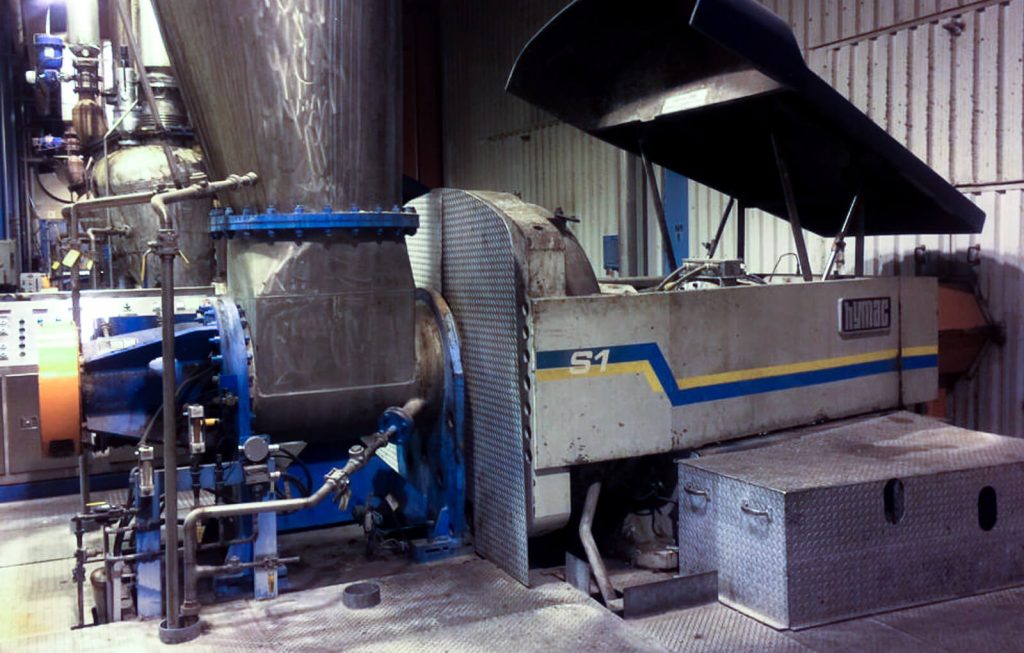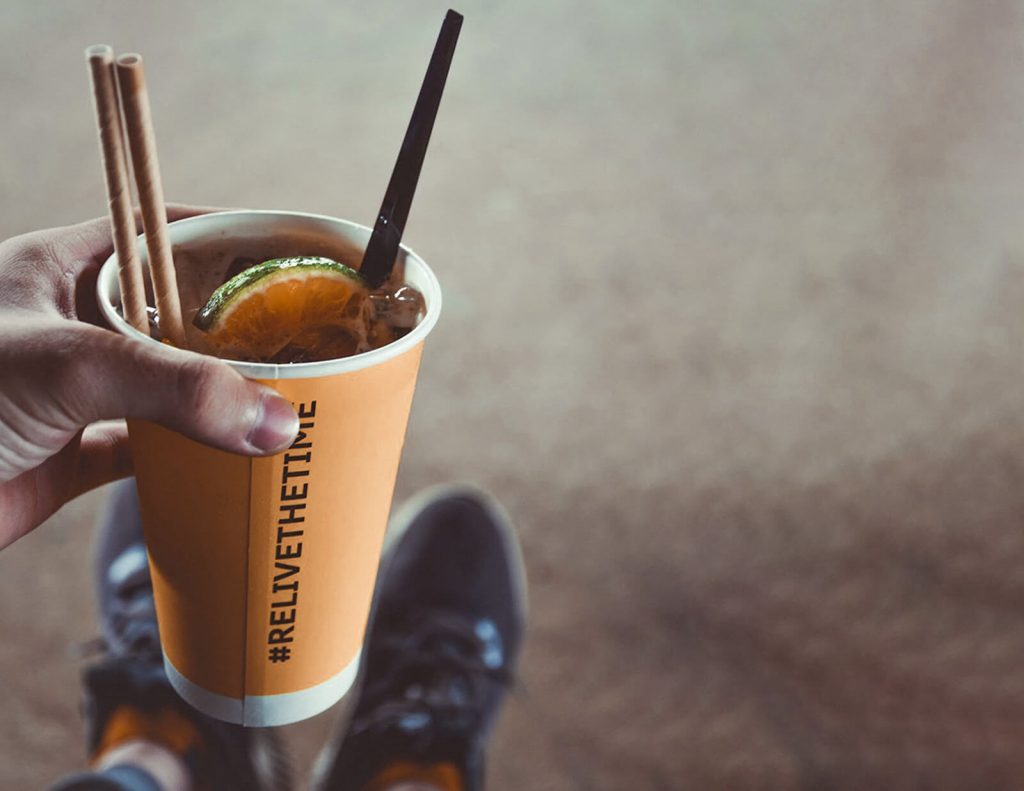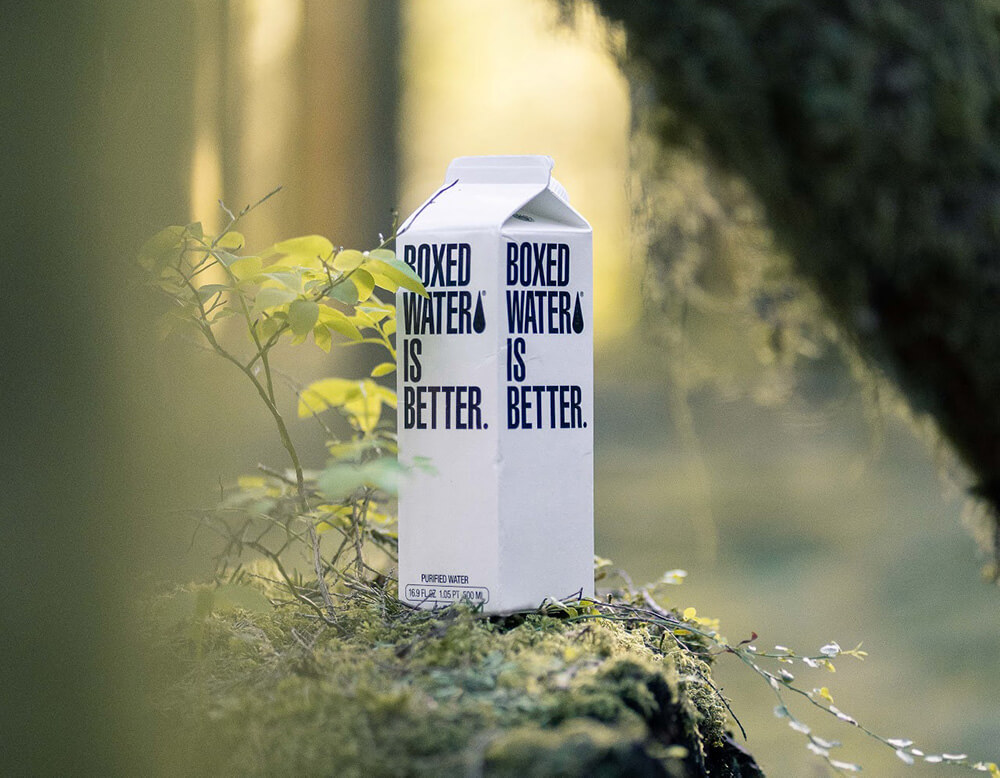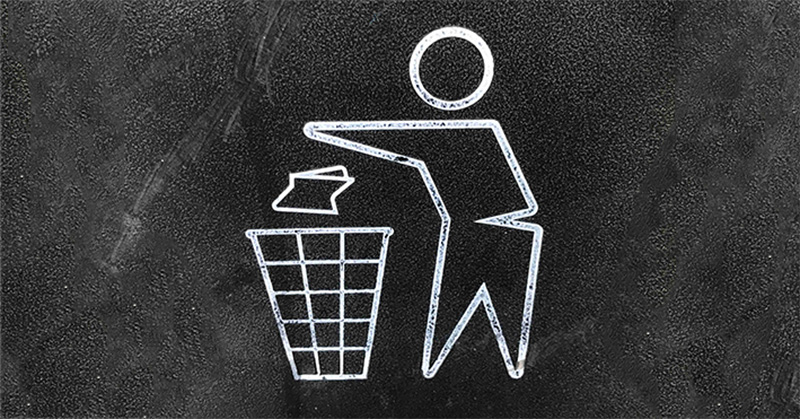Paper cups without a plastic coating
By Steffen Andersen · 12. October 2019
At Limepack, we’re very happy to be able to offer what is without a doubt the most sustainable option available on the market right now when it comes to paper cups: plastic-free paper cups.
Production of plastic-free paper cups
How exactly are paper cups without a plastic coating produced, and what are their benefits? Let’s dive into it together in this blog post, where we’ll go into depth with the production process and which materials are used!
Raw material is used for the plastic-free paper cups
A smart, innovative and 100% recyclable idea is now being used to create paper cups without the usual plastic layer. The primary problem with producing plastic-free paper cups has always been to make a coating that was able to contain liquids, which is why plastic has been used as the primary coating. But here’s where the latest innovative development within paper cups comes in:
Instead of producing them with a plastic layer, a water-based dispersion coating is now being used to form an effective barrier inside the cups to make them able to contain liquids. The main resource for the plastic-free paper cups is pulp from trees, which is mixed with chemicals and then put into a water fuse together to form a thin layer. When the water is dried off, the layer that is sticking to the pulp will then form a barrier that is able to contain liquids. This layer can contain liquids since the pulp is newly produced and doesn’t come from any recycled materials.
If you’re interested in knowing more about how a tree becomes pulp to finally be made into paper cups, you can read more about the process here.
Process of chemi-thermomechanical wood pulp
The middle layer of the paper cup is made with chemi-thermomechanical pulp which helps hold together the other layers which are created from water-based dispersion. Below, I would like to go into detail with how chemi-thermomechanical wood pulp is created.

Before the wood chips are converted into pulp, they are sent through cleaning, steaming, and drying so they can be able to absorb the chemicals. Afterwards, the pulp is set to be refined before it starts bleaching and the rest of the chemicals are applied. When the pulp has passed all important stages, it is finally set to get dried in a wind tunnel with 230 Celsius.
Finalizing and producing the product
As I’ve described in the above two sections, the primary invention within the plastic-free paper cups is the coating itself. The process of producing them is still the same as with the normal paper cups, which is why the plastic-free paper cups can be produced by all paper cup manufacturers. If you’re interested in how paper cups are produced, you can read more about it in this blogpost.
Usage of the product
The plastic-free paper cups are like normal paper cups mainly used by cafes, restaurants, and hotels. They can be used in all the same occasions as standard paper cups, since they can contain both cold and hot liquids. The plastic-free paper cups have the same restrictions regarding alcohol as normal paper cups, which means they cannot contain strong alcohol and should not contain drinks with more than 5% alcohol. Paper cup manufacturers specify that the cups can be used to serve beer without foaming too much.

Compostability & recyclability
Let’s look a bit into the compostability and recyclability of the plastic-free paper cups. in this following section.
Plastic-free paper cups and their compostability
When it comes to plastic-free paper cups and their compostability, there are ongoing tests to make sure that they’re compostable when thrown in nature. Most reports confirm that they are compostable, but to make sure, they must be under temperature conditions of 20-30 Celsius. If they’re under that temperature, it will take them 26 weeks to decompose. In this case, they should be sent to composting facilities to make sure they are decomposed in a proper way. No matter what, we of course do not recommend that you throw the paper cups in nature.
Plastic-free paper cups and their recyclability
Paper cups are manufactured from virgin wood fibers and other relevant chemicals which in general makes it easier and more available for recycling technologies to complete the recycling process without any problems. New pulp can easily be recycled to other paper products and be repulped even up to seven times. Of course, when recycled more than seven times, it will not have the same quality. It is also important to note that while the plastic-free paper cups are recyclable, they cannot be used to produce other food packaging products, since recycled paper is not allowed to be used for food contact materials.
Our plastic-free paper cups are marked with the label ‘AAA’ to indicate that they are fully recyclable with regular paper – more specifically that they have a recyclability of 95%. ‘AAA’ is the second highest ranking to ‘AAA+’, which is practically an unobtainable certificate to achieve on packaging.

The plastic-free paper cups are designed to be easily recycled and repulped so all recovery fiber facilities that process carton-board products, can process them without any problems. All paper board produced with plastic-free paper is proven to be recyclable and repulpable in conventionally recovered fiber facilities. So, the cups should be collected with other recyclable materials such as newspapers, magazines, etc.
Since the paper cups can be recycled in normal recycling facilities, this creates an efficient recycling system and process. Food service companies using wood fiber-based cups can then improve their environmental footprint easily with plastic-free paper cups. If the goal is to create a business model where customers can be a part of collecting paper cups, the recycling process should be easy.
Advantages and disadvantages
In this last section, we’ll go through some advantages and disadvantages of the plastic-free paper cups. These include the early stages of their production, their use and their recycling process.
Advantages
First, the absolute biggest benefit of using plastic-free paper cups is that it will help reduce the general amount of plastic waste and the use of single-use paper cups which end up in landfills and are not taken to recycling facilities. Other than helping the environment, coffee-, fast food- and restaurant chains can save a lot on waste charges, as the containers are recyclable.
Nowadays, there is great concern for the environment, and people are therefore looking for more sustainable products. This is why offering the public environmentally friendly products will help create a positive reputation among customers.
Another great advantage about the plastic-free paper cups is that they’re fully degradable in nature and that they can be taken to recycling facilities where they can be fully recycled with regular paper. This is not a possibility with ordinary paper cups, since they’re usually coated with a PE-plastic layer on the inside, which means they’re neither degradable in nature or recyclable. These paper cups need to be recycled at special recycling facilities that most countries do not have.

Since plastic-free paper cups are designed and produced to be easily recyclable, it is a significant advantage that they are proven to be recyclable and repulpable along with other paper- and board waste. With that being said, it is also a time-saving factor for paper mill facilities and consumers, since they are being thrown in normal trash bins with other paper products that are recycled altogether at available recovered fiber facilities.
One of the main problems with plastic-free paper cups is that all recycling facilities would have to be taught that plastic-free paper cups can actually be recycled and that the paper is of sufficient quality to be used in the production of magazines, newspapers and other paper products.
The recycling industry can be slow in adapting to new products like plastic-free paper cups because of either missing information or infrastructure to collect the cups, but also if they’re not forced by certain laws in doing so. Also, they might not allow for the paper cups to be recycled with regular paper, since it’s more economical to not separate too much waste. This is why it’s a good idea to make sure that your local recycling facilities will accept the plastic-free paper cups before throwing them in the paper waste.
Another disadvantage is the fact that waste facilities can have a hard time differentiating between the ordinary paper cups and plastic-free paper cups. In this case, if the normal paper cups coated with plastic are thrown to recycling, the plastic in them will destroy the whole badge of recycled paper. To help facilities differentiate between these paper cups, the plastic-free paper cups are marked with the number ’21’ to indicate that they belong with sorted paper and not paper waste.
Conclusion
Paper cups without plastic coating are the sustainable innovation that the paper cup industry has long been waiting for. However, there are some challenges that stand in the way of them living up to their full potential.

